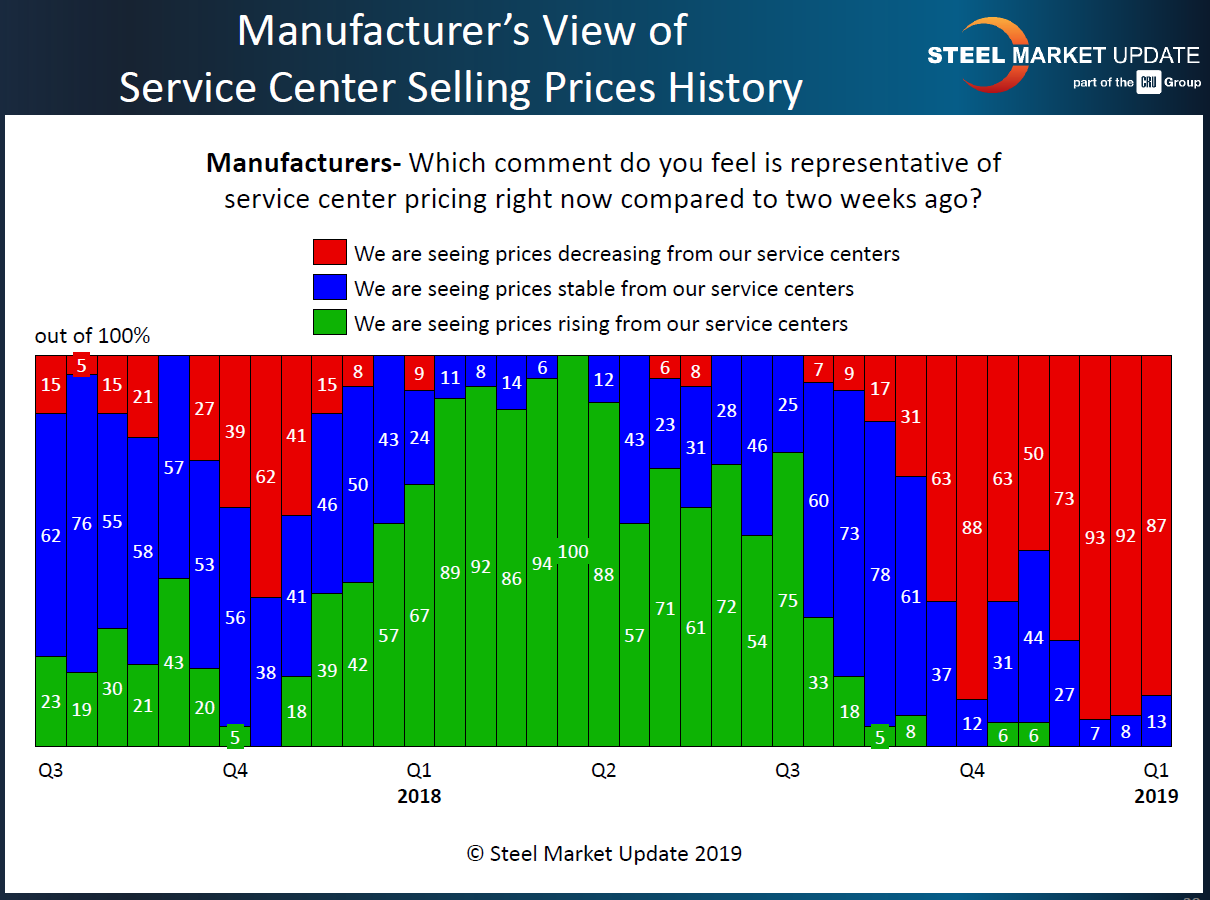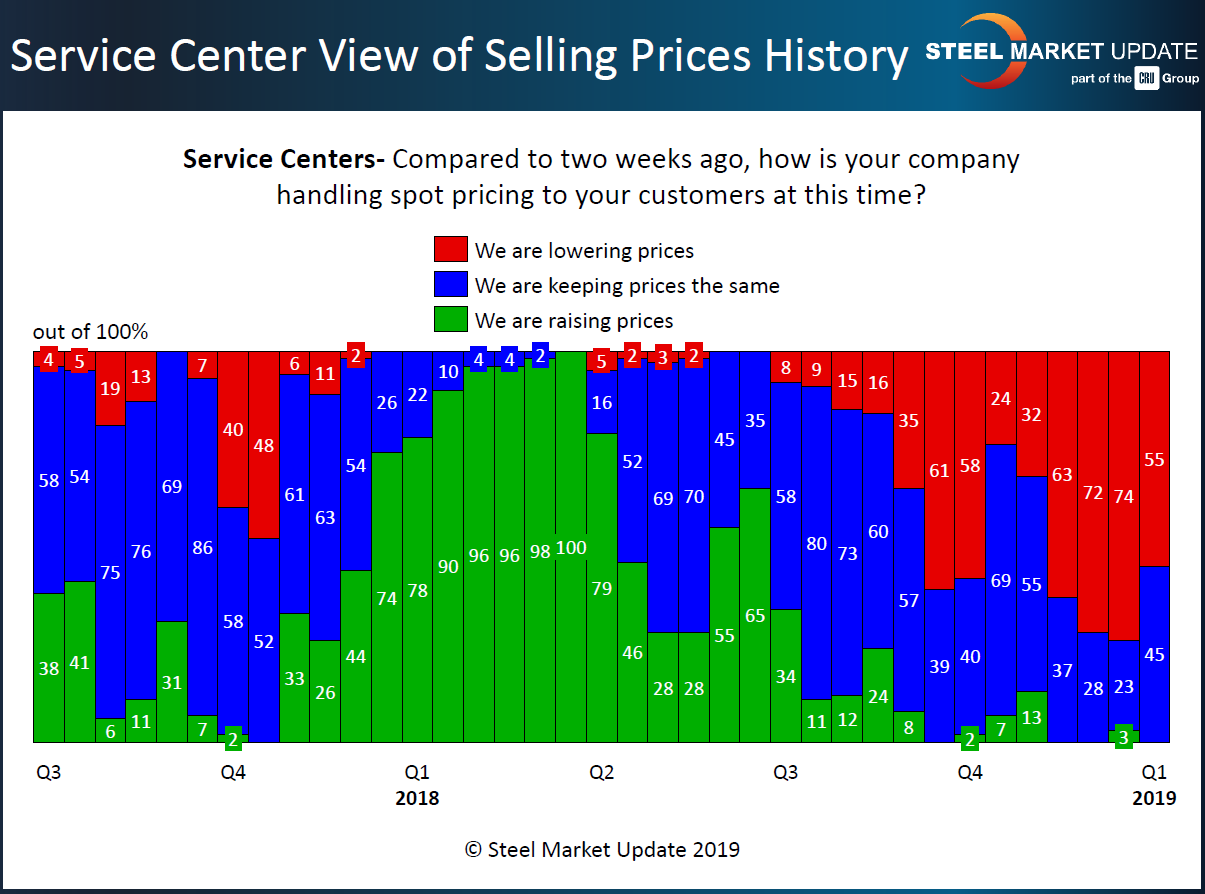SMU Data and Models

SMU Service Center Spot Pricing: No Capitulation
Written by John Packard
January 13, 2019
Last week, Steel Market Update concluded our early January analysis of the flat rolled and plate steel market trends. One of the key areas we watch is how service centers are handling spot pricing of flat rolled steels to their end customers. Over the years we have learned that when service centers are raising prices, they are also supporting price increases out of the domestic steel mills. When distributor spot prices are being lowered, the service centers are not supporting any move (or potential move) by the domestic steel mills to raise pricing.
However, there is a time when more than 75 percent of the service center community is advising Steel Market Update that they are lowering spot prices. Our data suggests that at that point, the distribution community is suffering financial strain due to the lowering of inventory values. SMU calls this the point of “capitulation,” which means the pain is intense enough, especially if prolonged over an extended period of time, for the service centers to become supportive of any move taken by the domestic steel mills to reverse the direction. This usually comes in the form of a price increase announcement out of the steel mills.
Before we provide the data collected from service centers last week, let’s first take a look at what the manufacturing community was reporting on spot pricing from their service center suppliers.
As you can see by the graphic below, 87 percent of the manufacturing companies participating in last week’s analysis reported service center prices as being lower than what they saw two weeks earlier. This is a very small reduction from the last two surveys conducted during the month of December.
Service centers, on the other hand, saw a significant change with 55 percent reporting offering lower prices compared to two weeks earlier. As you can see, the distributors were inching very close to the point of capitulation during the month of December. It appears, for the moment, with the 19 percent point reduction, that service centers would be less supportive of any move by the domestic steel mills to increase pricing.

John Packard
Read more from John PackardLatest in SMU Data and Models

SMU Scrap Survey: Sentiment Indices rise
Both current and future scrap sentiment jumped this month, though survey participants reported responses before key trade news was announced.

SMU Survey: Sentiment splits, buyers have better view of future than the present
SMU’s Steel Buyers’ Sentiment Indices moved in opposite directions this week. After rebounding from a near five-year low in late June, Current Sentiment slipped again. At the same time, Future Sentiment climbed to a four-month high. Both indices continue to show optimism among buyers about their company’s chances for success, but suggest there is less confidence in that optimism than earlier in the year.

SMU scrap market survey results now available
SMU’s ferrous scrap market survey results are now available on our website to all premium members. After logging in at steelmarketupdate.com, visit the pricing and analysis tab and look under the “survey results” section for “ferrous scrap survey” results. Past scrap survey results are also available under that selection. If you need help accessing the survey results […]

SMU flat-rolled market survey results now available
SMU’s latest steel buyers market survey results are now available on our website to all premium members. After logging in at steelmarketupdate.com, visit the pricing and analysis tab and look under the “survey results” section for “latest survey results.” Past survey results are also available under that selection. If you need help accessing the survey results, or if […]

SMU Survey: Sheet lead times stabilize, plate contracts
Mill lead times for sheet products were steady to slightly longer this week compared to our late June market check, while plate lead times contracted, according to steel buyers responding to this week’s market survey.


